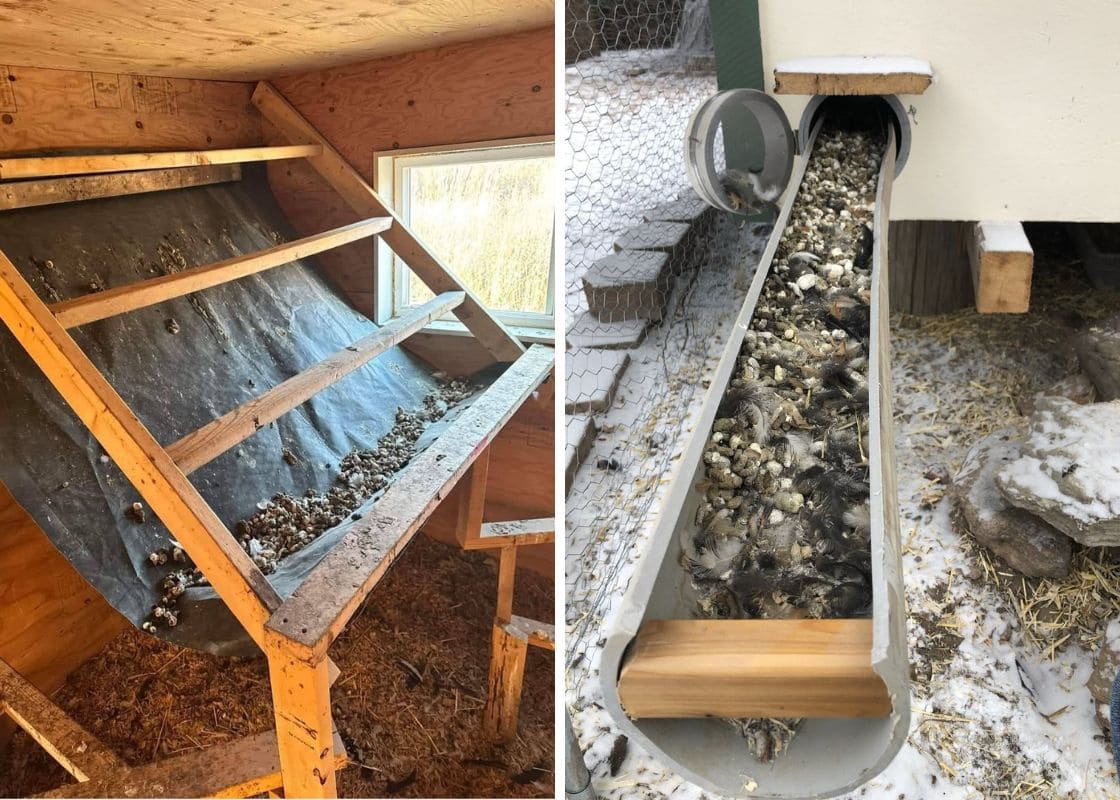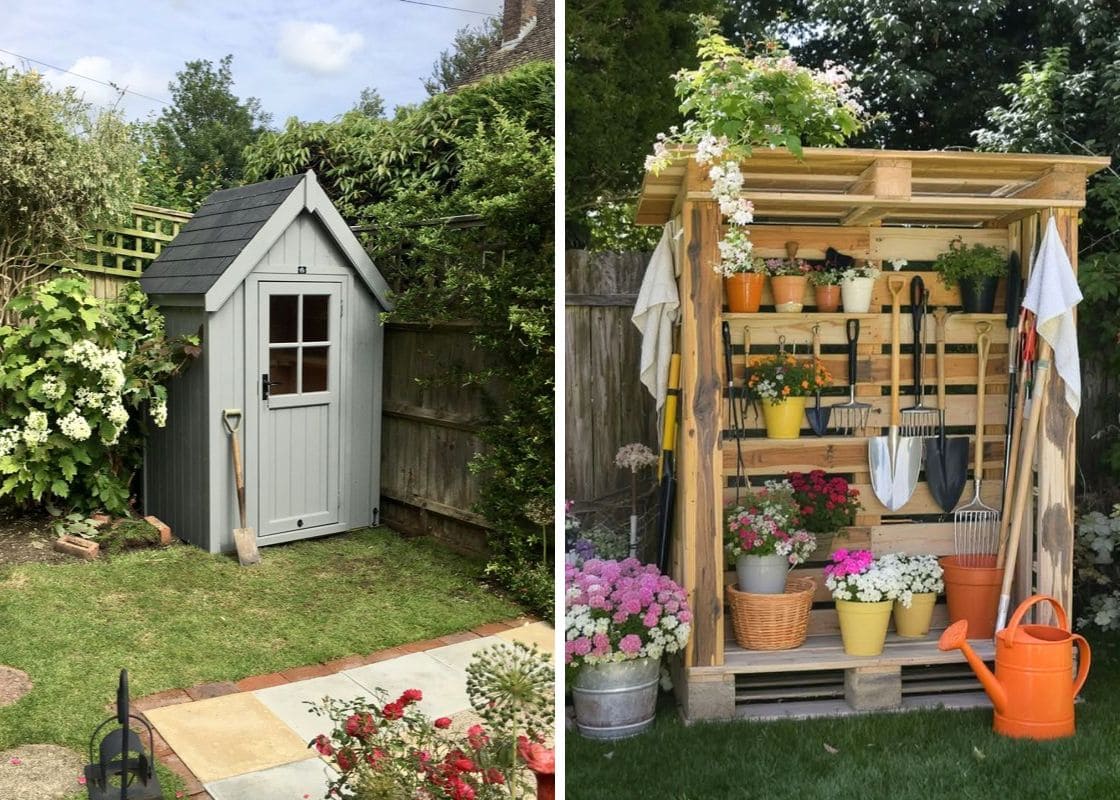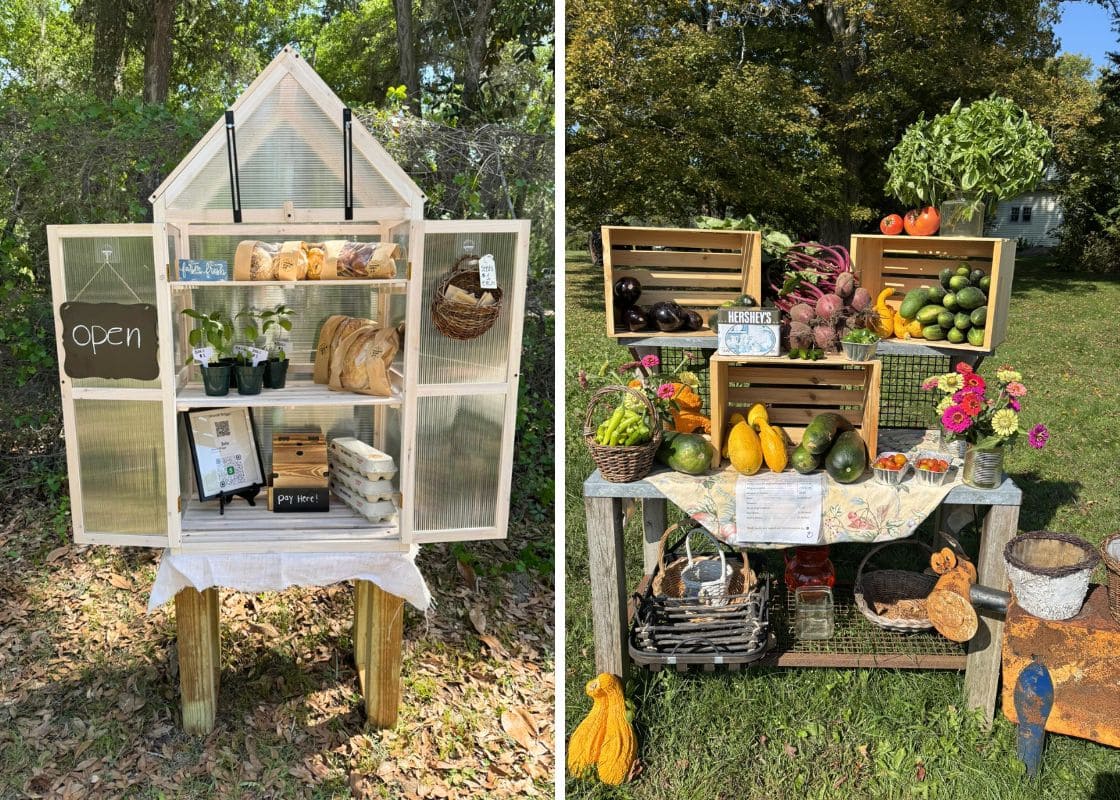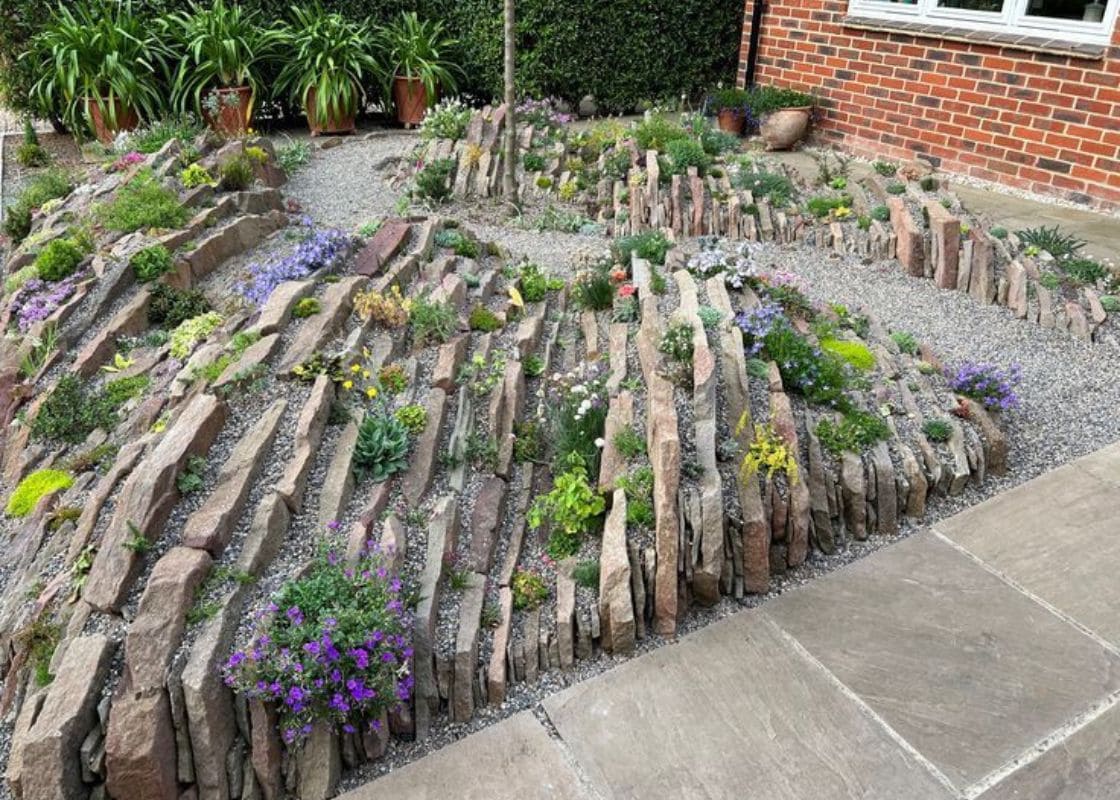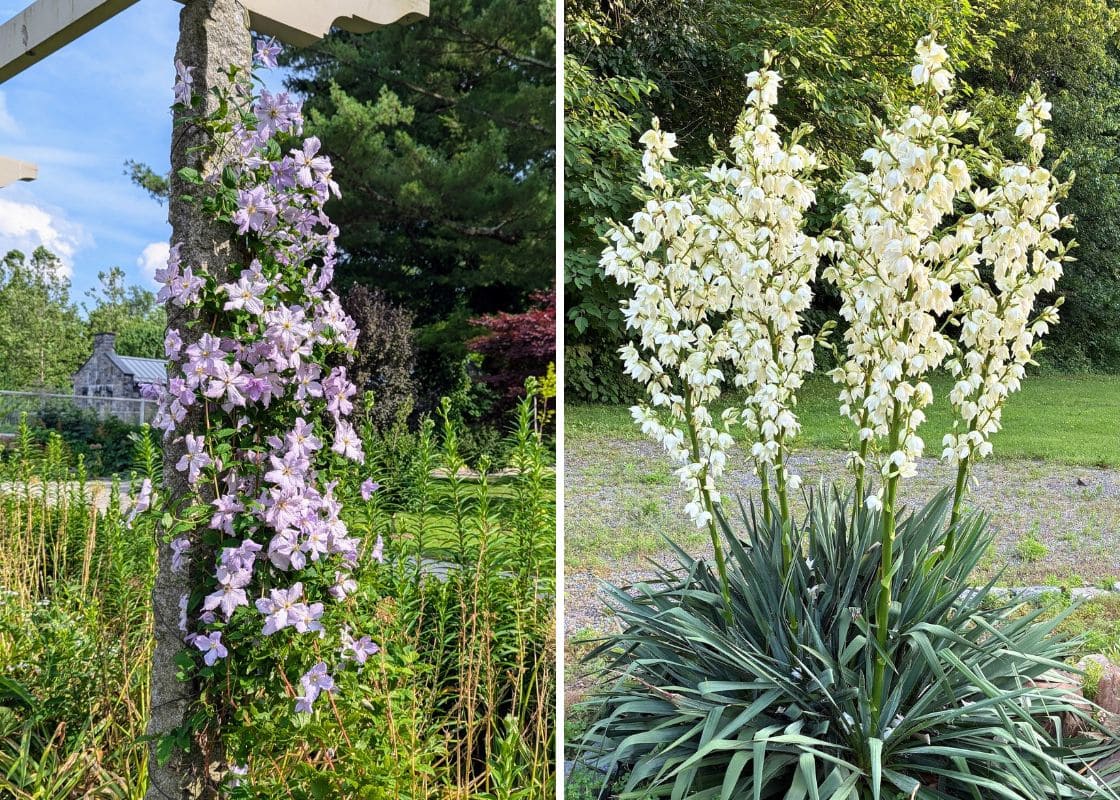Before you toss that cracked laundry basket to the curb, let me tell you something: it has one more job to do and it’s in your garden. With a little lining and soil, laundry baskets become the perfect breathable planters, ideal for growing vegetables, herbs, and even strawberries.
What makes them work is that the built-in airflow, vertical structure, and generous drainage create a container environment that rivals many store-bought planters and they cost next to nothing.
Whether you’re short on space or just love clever garden hacks, here’s how you can transform old baskets into growing machines. Below are 7 top-performing plants that thrive in this setup and exactly how to help them succeed.
#1. Potatoes
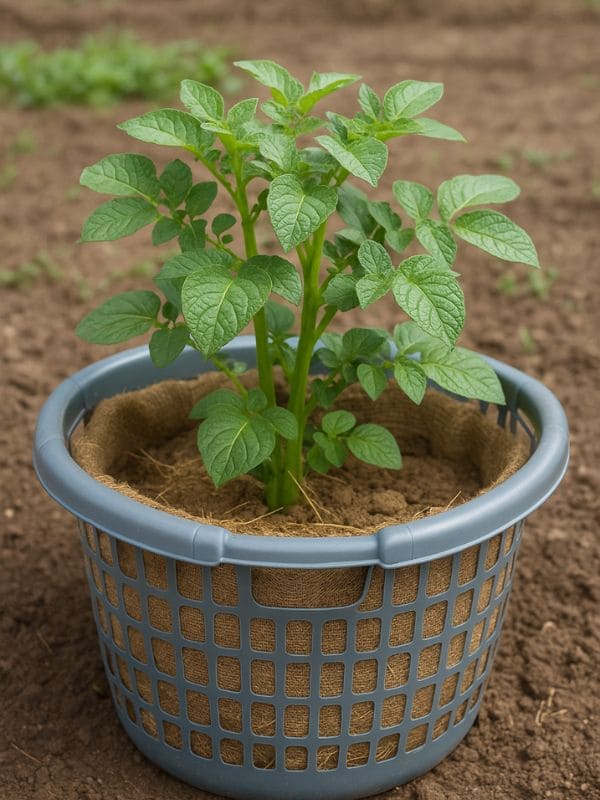
Potatoes and laundry baskets are a match made in gardening heaven. These tubers love deep, fluffy soil that drains well, and the vertical shape of a basket makes it easy to hill as the plant grows.
Start with just a few inches of soil at the bottom, place your seed potatoes spaced out a bit, and cover them. As green shoots appear, keep layering more soil or straw to cover the stems. This helps the plant produce more potatoes along the buried stem.
Additionally, keep the basket in full sun and water it consistently, just enough to keep the soil from drying out completely.
When the foliage yellows and dies back, you’ll know it’s time. You just ip the basket over, and it becomes a treasure hunt for golden spuds. The kids (and honestly, the adults too) will love it.
#2. Carrots
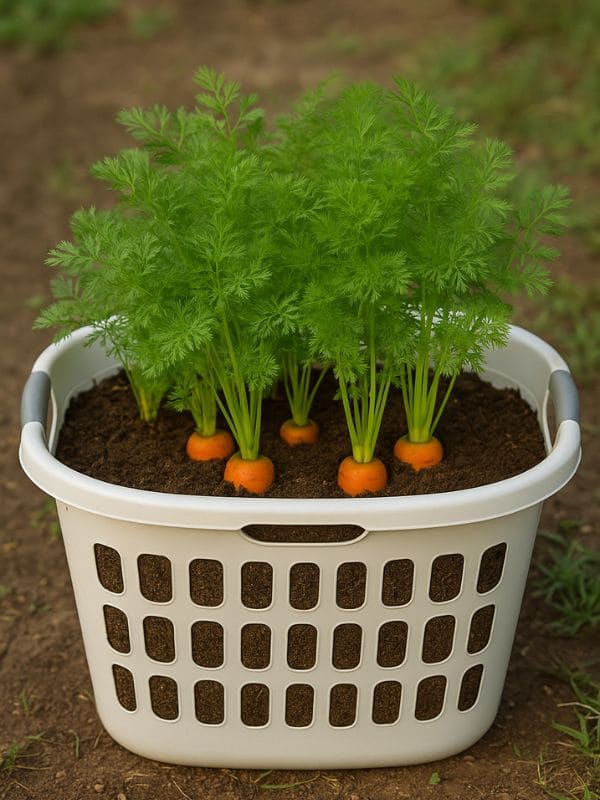
Carrots need room to stretch downward, and compacted soil is their enemy. A laundry basket gives you the chance to build a loose, sandy mix that lets them grow long and straight.
I like to line the basket with landscape fabric or burlap, then fill it with a light soil mix, you can think compost, peat, and a bit of sand. Sow seeds directly, then keep the top layer moist until they germinate.
Thinning is important here. It might feel wasteful, but giving each carrot space means better results in the end.
You’ll know they’re ready when the orange shoulders peek just above the soil. I’ve found that adding a top layer of fine sand helps them stay straight and smooth, just like in raised beds.
#3. Onions and Shallots

Onions and shallots do surprisingly well in baskets, mostly because they like airflow and don’t need deep soil. A mid-sized basket is perfect.
Fill it with rich, well-draining soil, then plant your sets (little starter bulbs) with the tips just peeking above the surface. Also, you need to space them about 4 inches apart.
They need full sun and a regular watering schedule, especially during bulb formation. What’s great is that you can tuck a laundry basket full of onions into a sunny corner, and they’ll just do their thing.
Once the tops begin to flop over and dry, you’re nearly there. At this time, stop watering, let them cure in place for a few days, and then harvest. I love drying the bulbs right in the basket, then braiding or storing them later.
#4. Leafy Greens (Lettuce, Spinach, Arugula)

If you’ve never grown your own salad basket, you’re in for a treat. Leafy greens like lettuce, spinach, and arugula are shallow-rooted and fast-growing, making them perfect for wide, shallow laundry baskets.
You line it well, fill with compost-rich potting mix, and sow seeds generously. As they sprout, thin them out a bit to give each plant breathing room.
Lettuce loves cooler temps and partial shade, especially in hot climates. Keep the soil consistently moist as dry spells can turn leaves bitter.
Furthermore, harvesting couldn’t be easier. Just pick the outer leaves regularly, and most greens will regrow again and again. I keep one basket right outside the kitchen door and cut fresh greens minutes before meals.
#5. Strawberries
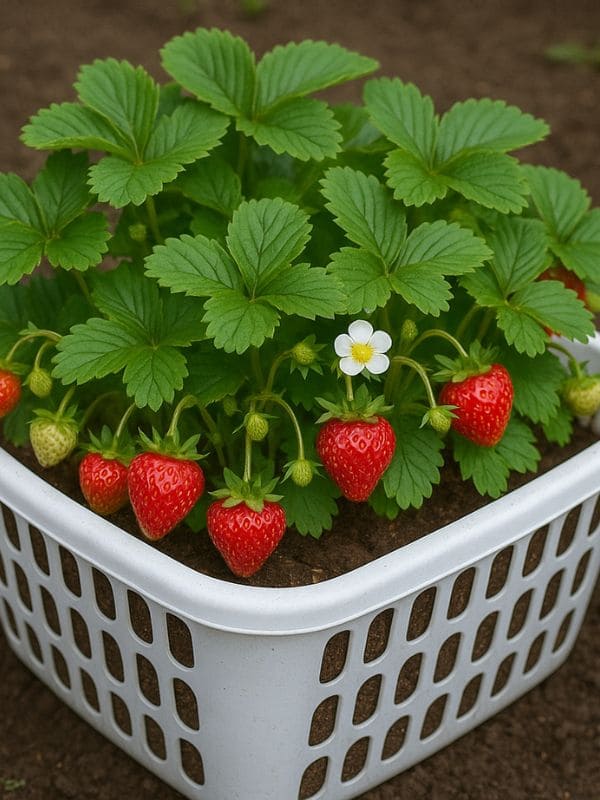
Strawberries thrive in baskets because of one key thing: airflow. Elevating the berries off the soil reduces rot, and the basket itself lets the roots stay cool while draining quickly.
You should choose a day-neutral or everbearing variety for a longer harvest. Plant the crowns with the tops just above the soil line and space them out so each plant gets light and air.
Besides, keep the basket in full sun, and water when the top inch of soil feels dry. I usually mulch lightly to keep moisture in and keep fruit clean.
When they ripen, strawberries are easy to pick, just snip with scissors to avoid tugging at the plant. If you hang the basket or elevate it slightly, you’ll also have fewer slug problems.
#6. Herbs (Basil, Parsley, Cilantro, Chives)
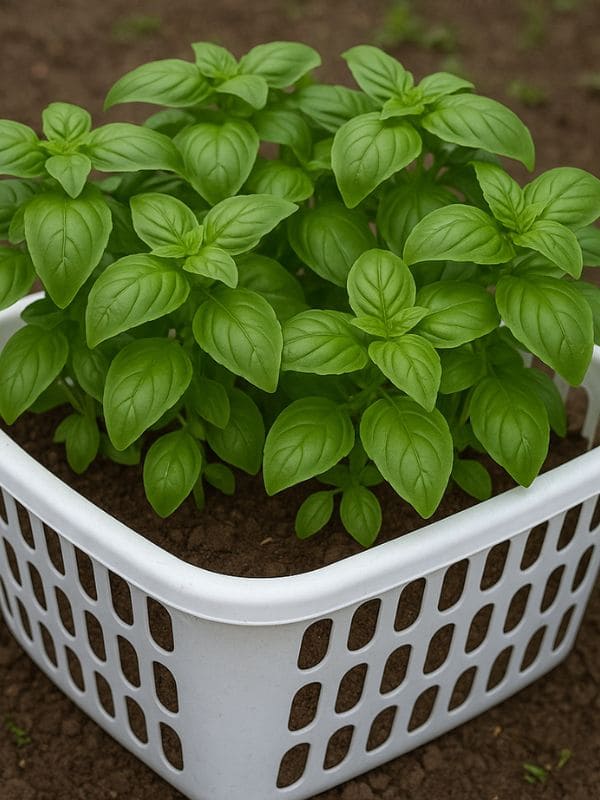
Laundry baskets make wonderful herb planters. Most culinary herbs don’t need much root depth, but they do need good drainage, which baskets offer by default.
Additionally, a shallow basket works great for a mix of herbs like basil, parsley, cilantro, and chives. I like to group herbs with similar sun and water needs together and keep the basket close to the kitchen.
Start from seed or small transplants. Basil and parsley like full sun, while cilantro prefers a bit of afternoon shade.
Specially, keep the soil moist but not wet, and pinch back new growth regularly to encourage bushiness. There’s nothing quite like stepping outside and snipping herbs right into your pan.
#7. Garlic
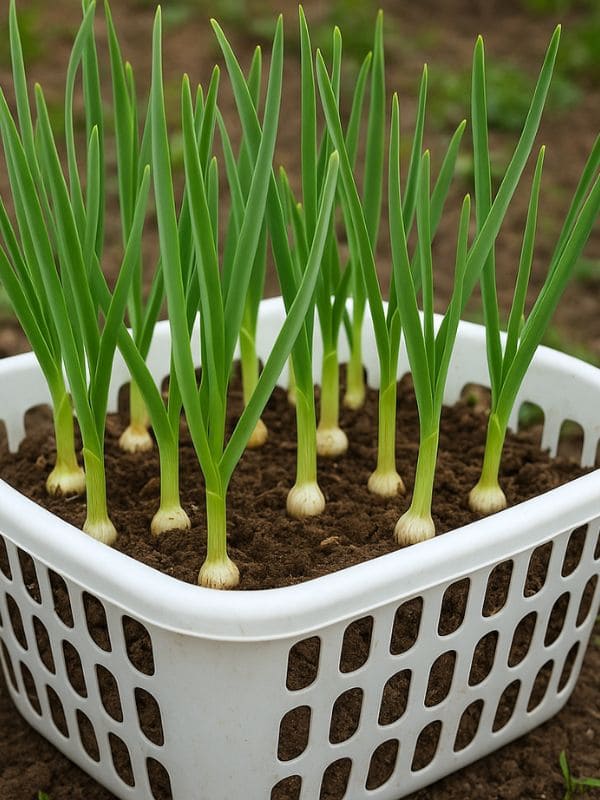
Garlic is one of those set-it-and-forget-it crops that works quietly behind the scenes. You don’t need much space to grow a satisfying harvest, just patience and good drainage.
As a result, laundry baskets are excellent because they let air circulate and prevent soggy roots. In fall, plant individual garlic cloves pointy side up, about 2 inches deep and spaced 4 inches apart.
Come spring, you’ll see green shoots. Cut the curly flower stems (scapes) when they appear to send energy back to the bulb. As the leaves yellow in early summer, ease off watering.
Once they’re mostly dry, gently lift the bulbs and let them cure in a dry, shady spot for a week or two. You can store them for months or braid them into rustic kitchen bundles.
Final Thoughts
Laundry baskets aren’t just for clothes anymore. They’re a great reminder that gardening doesn’t have to be expensive or complicated to be productive and joyful. With a little creativity and care, you can turn an old basket into a thriving container full of food and flavor.
So before you buy another plastic pot, look around your home. You might already have the perfect planter waiting to be filled with soil, seeds, and potential.


